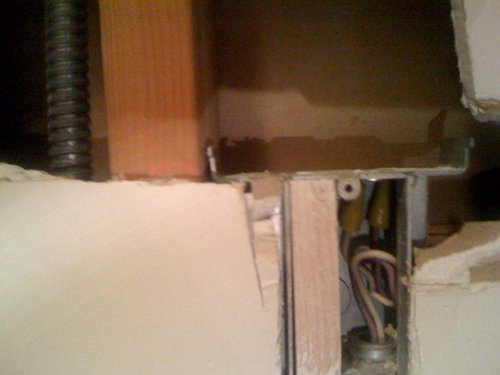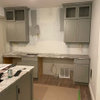Angie_DIY et al., wiring question X post
eam44
10 years ago
Related Stories

KITCHEN DESIGN9 Questions to Ask When Planning a Kitchen Pantry
Avoid blunders and get the storage space and layout you need by asking these questions before you begin
Full Story
MOST POPULAR10 Things to Ask Your Contractor Before You Start Your Project
Ask these questions before signing with a contractor for better communication and fewer surprises along the way
Full Story
DIY PROJECTSLace Goes Modern in an Upholsterer's DIY Pendant Lights
Bring romance to a room with delicate pendant lights you can make yourself
Full Story
FURNITUREModern Icons: Eames Shell Chair
Eames' Comfy Shell Chair Adds Welcome Curves, Wire or Wood to a Room
Full Story
CLOSETSHouzz Call: Is Your Closet a Storage Powerhouse?
We want to see how you are making the most of your closet storage areas. Post pictures and tell us how you’ve organized them
Full Story
BATHROOM DESIGNSee 2 DIY Bathroom Remodels for $15,500
A little Internet savvy allowed this couple to remodel 2 bathrooms in their Oregon bungalow
Full Story
KITCHEN DESIGNShow Us Your Fabulous DIY Kitchen
Did you do a great job when you did it yourself? We want to see and hear about it
Full Story
BATHROOM DESIGNHow to Settle on a Shower Bench
We help a Houzz user ask all the right questions for designing a stylish, practical and safe shower bench
Full Story
BEFORE AND AFTERSHouzz TV: See Recycled Walls and Cool Cassette Art in a Woodsy DIY Home
Walnut countertops join hardwood floors and pieces made from leftover framing in a bright Spanish colonial
Full Story
DECORATING GUIDES8 Reasons to Jump Off the DIY Bandwagon
You heard right. Stop beating yourself up for not making stuff yourself, and start seeing the bright side of buying from others
Full Story










gpraceman55
gpraceman55
Related Professionals
Clarksburg Kitchen & Bathroom Designers · Fair Oaks Kitchen & Bathroom Remodelers · Fort Myers Kitchen & Bathroom Remodelers · Fort Pierce Kitchen & Bathroom Remodelers · Garden Grove Kitchen & Bathroom Remodelers · Newberg Kitchen & Bathroom Remodelers · Upper Saint Clair Kitchen & Bathroom Remodelers · Christiansburg Cabinets & Cabinetry · Crestview Cabinets & Cabinetry · Farmers Branch Cabinets & Cabinetry · Mount Holly Cabinets & Cabinetry · Milford Mill Cabinets & Cabinetry · Roxbury Crossing Tile and Stone Contractors · Castaic Design-Build Firms · Mililani Town Design-Build Firmsgpraceman55
angie_diy
eam44Original Author
gpraceman55
angie_diy
eam44Original Author
gpraceman55
angie_diy